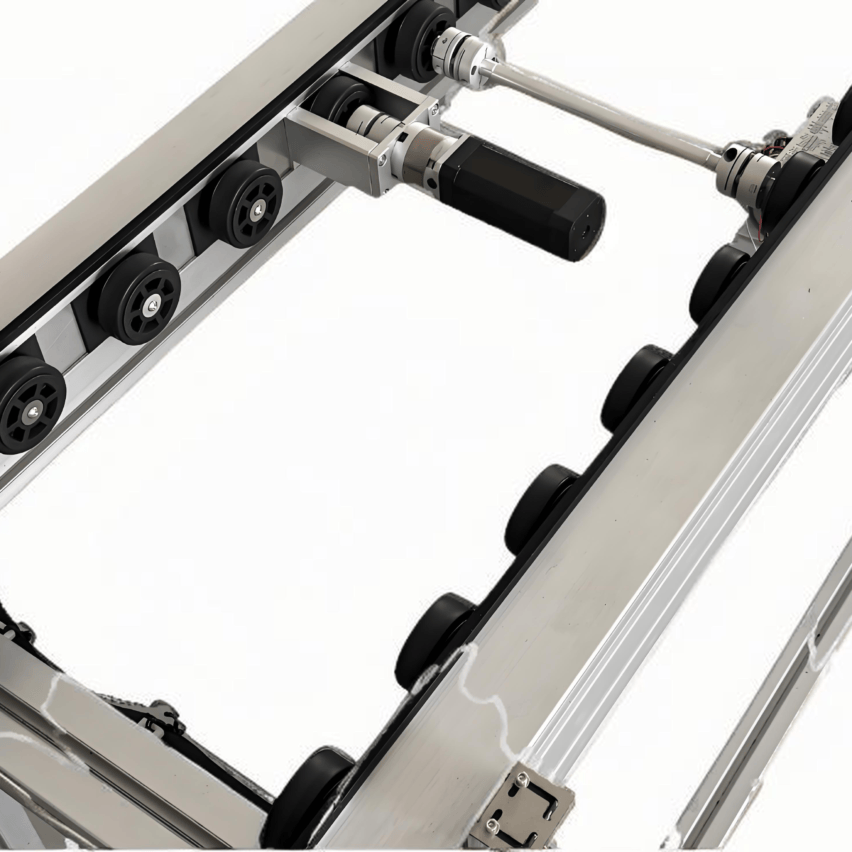In the e-commerce warehousing centre, sorter Li face piles of express parcels frequently stuck in the conveyor line turns, and auto parts factory engineers Zhang was forced to shut down for maintenance due to heavy-duty box bending rollers - these typical pain points are derived from roller conveyor line selection errors. In this paper, we will use three major scenarios to solve the core contradiction in selection.
Scenario 1: Diagnosis of conveying requirements → Locking roller type
Core contradiction:
Mismatch between cargo characteristics and roller function (e.g., insufficient power leading to stacking, turning and slipping)
- Lightweight e-commerce carton (≤30kg)
- Selection combinations:Unpowered tilting roller (self-slip angle 1.5°)
- Multi-coupling belt drive power section
- Advantages: power saving by sliding under its own weight, power section to solve sorting port build-up (3 times more power transmission than O-belts).
- Automotive metal bins (800kg)
- Selection combinations:Double sprocket heavy duty rollers (wall thickness ≥3mm)
- Internal threaded mounting (shaft diameter ≥ 30mm)
- Key parameters: single roller load-bearing needs to be >200kg (calculated by contacting 3 rollers), to avoid bending deformation
- Liquids in chemical drums (need to be corrosion resistant)
-
Selection combinations:Stainless steel rollers + rubber-coated surface
-
Pit avoidance: zinc-plated material is prohibited (easy to rust by chemical corrosion), rubber coating to prevent liquid slippage.
-
Scenario 2: The Law of Width Matching → Eliminating Jams and Run-offs
Core contradiction:
Insufficient width allowance triggers jamming, excessive allowance leads to cargo deflection
| Type of goods | formula | Application Cases |
|---|---|---|
| Standard carton (rigid bottom) | Roller length W = Cargo width B + 50mm | W=450mm roller for B=400mm (matching standard 400mm frame) |
| Flexible woven bag (easily deformed) | Roller length W ≥ 1.2 times cargo width B | B=600mm soft pack requires W=720mm roller (anti-edge jamming gap) |
| Pallet Turning Conveyor | Inside rack width BF ≥ √((R+B)²+(L/2)²)-R+125mm | 1.2m pallet needs BF ≥ 1450mm at R=900mm turning section |
⚠️ Fatal Misconceptions Corrected:
When conveying flexible goods, the roller spacing T must be ≤1/4 of the length of the goods (Example: 2m long fabric rolls need T ≤ 500mm), otherwise it will lead to the middle of the overhanging card stops.
Scenario 3: Driver and Installation Optimisation → Practical Tips for Reducing Costs and Increasing Efficiency
Core contradiction:
High failure rate due to improper transmission (e.g. chain breakage, belt slippage)
- High frequency start-stop sorting line
→ synchronous belt drive
- Advantage: Positioning accuracy ±1mm (suitable for interfacing with robots)
- Parameter example: Centre distance 100mm with 10-T5-330 timing belt (66 teeth) - High humidity cold chain warehouse
→ O-belt drive
- Pothole avoidance: disable polytunnels (water vapour causes slippage)
- Maintenance point: weekly belt tension checks (preload 5-8%) - Heavy Duty Assembly Line
→ spring loaded mounting
- Advantage: Only 2 minutes to change rollers (compared to bolt-on time saving 70%)
- Limitations: not suitable for sprocket drives (easily loosened by vibration)
The three golden laws of selection:
① Individual goods mustSimultaneous contact with ≥ 3 rollers
②The width of the turning section is determined by√((R+B)²+(L/2)²) Formula Verification
③ Preferred for corrosive environmentsStainless steel + cladding
Prohibition of galvanisation
After the application of this solution in a home appliance factory, the sorting efficiency was increased by 40%: by accurately matching the type of rollers (multi-wedge belts for the power section, self-sliding section tilted at 1.2°) and customising the width of 1250mm rollers according to the size of the 1200mm washing machine, the overturning accidents were completely eliminated. Scientific selection is not only technical work, but also the art of balancing cost and efficiency.













